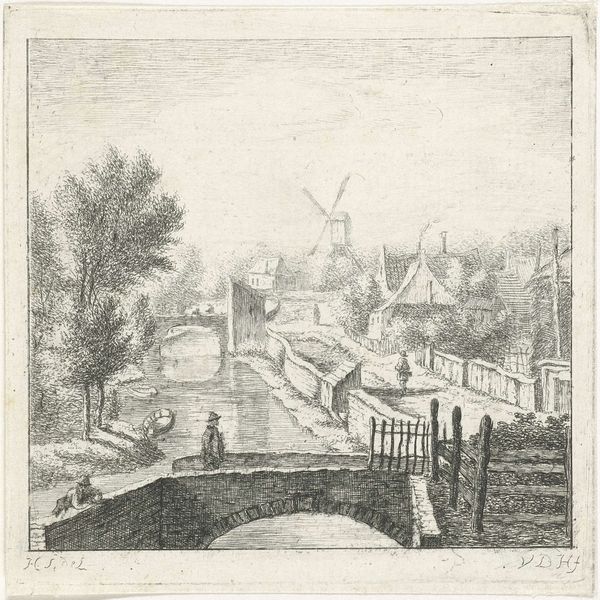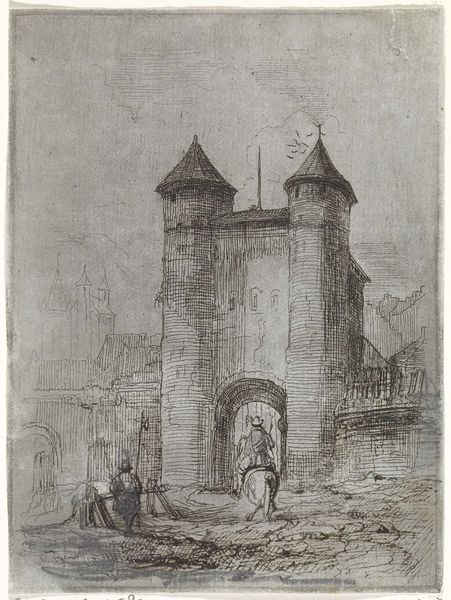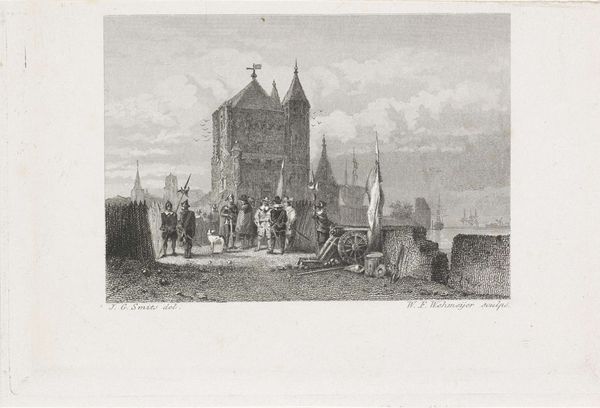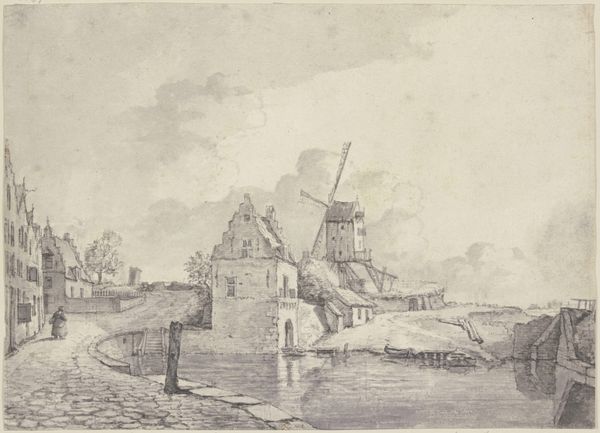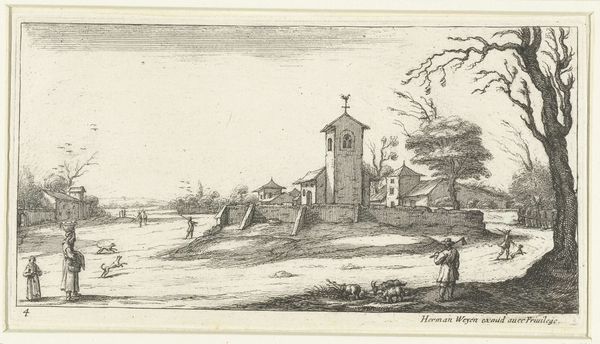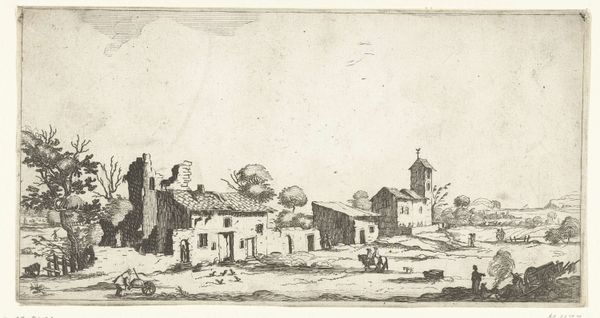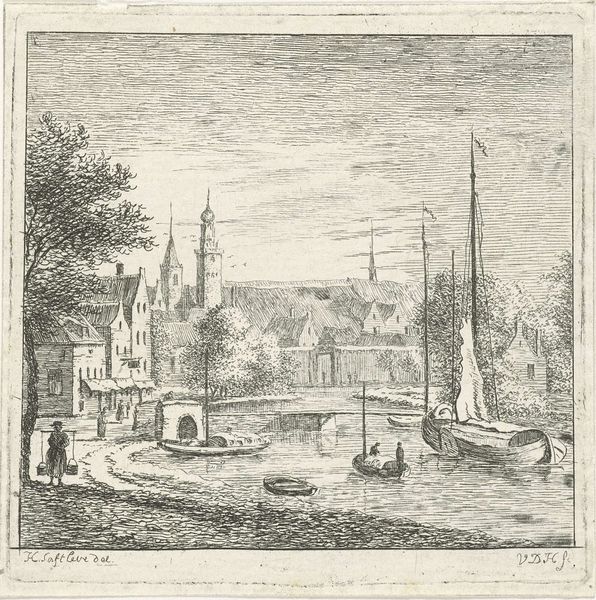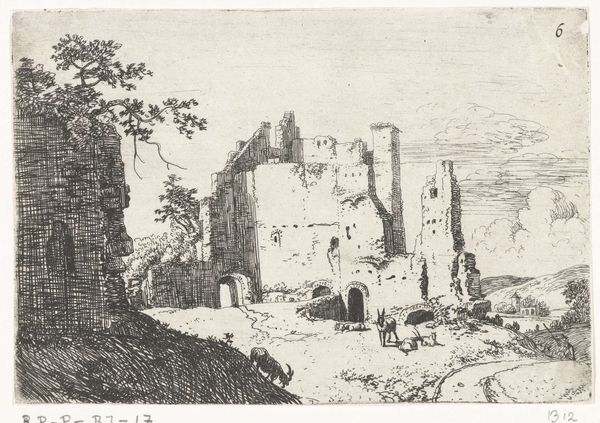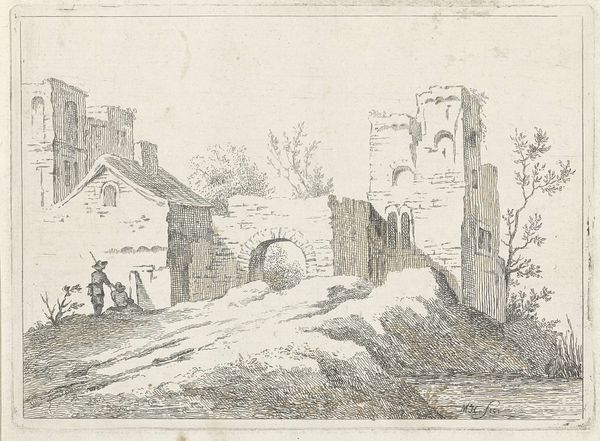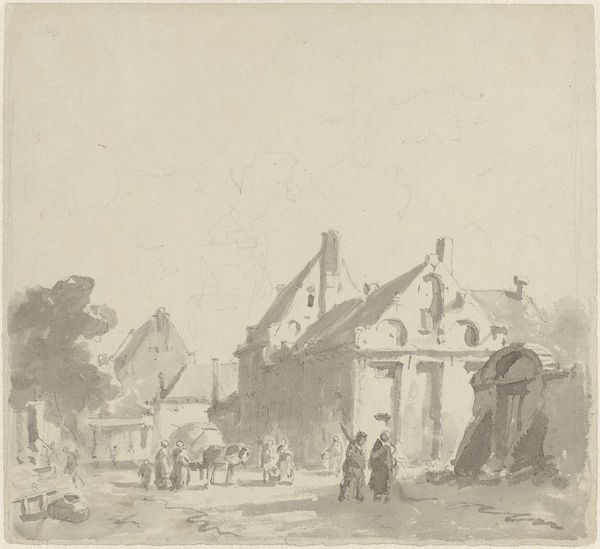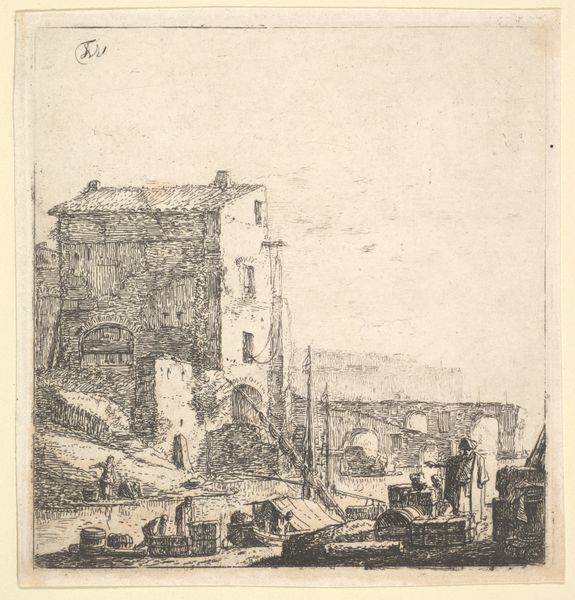
Dimensions: height 89 mm, width 89 mm
Copyright: Rijks Museum: Open Domain
Anthonij van der Haer etched this image of the Wittevrouwenpoort in Utrecht during the 18th century. Note how the artist's depiction of the gate emphasizes its function within the urban landscape. The Wittevrouwenpoort was not merely an architectural structure but a key point of transit, defense, and social control in Utrecht. Positioned on the city's eastern edge, it regulated the flow of people and goods, embodying Utrecht's economic and political power. Van der Haer’s detailed rendering invites us to consider the cultural values attached to urban spaces in the Dutch Golden Age. What can we learn from studying such images? Art historians might consult city archives, period maps, and social histories. Such resources allow us to consider the artist's choices in the context of Utrecht's evolving identity. The image reminds us that art's meaning is always rooted in its historical and institutional setting.
Comments
No comments
Be the first to comment and join the conversation on the ultimate creative platform.
